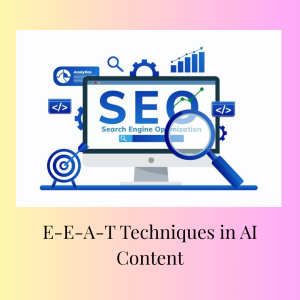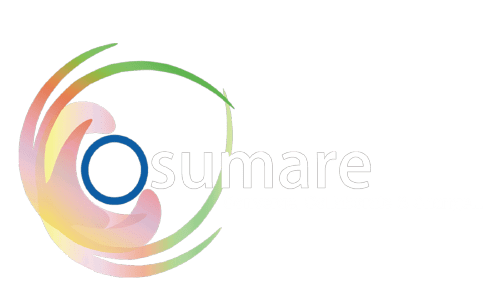
E-E-A-T in AI-generated content has become mainstream as it flavours content by adding accurate knowledge ,provide natural examples and increase authority of content to maximize performance. However, ranking high on Google still depends on the E-E-A-T framework — Experience, Expertise, Authoritativeness, and Trustworthiness.
While AI can draft content quickly, optimizing it for E-E-A-T is crucial to ensure it meets quality standards and performs well in organic search. In this article, we’ll walk you through practical techniques to optimize AI content for better credibility, authority, and search engine performance
What Is E-E-A-T?
E-E-A-T, introduced by Google in its Search Quality Rater Guidelines is adding human perspective to AI content to make it a quality for users perspective. It stands for:
- Experience: Does the author have first-hand knowledge?
- Expertise: Is the author an expert in the topic?
- Authoritativeness: Is the content or site recognized as a go-to source?
- Trustworthiness: Can readers trust the information?
Google doesn’t directly “score” E-E-A-T but uses it as a framework to evaluate content quality
Need for E-E-A-T in AI-Generated Content .
Personal experience
Sometimes AI as ChatGPT or Gemini provide long content but has no knowledge to share examples which lack experience in topical content leading to dissatisfying readers. Hence EEAT is must to provide quality by sharing outline of experienced writers which is essential for satisfying reader information.
Factual accuracy or source attribution
Sometimes AI Content is not accurate factually hence it may misguide audience .Hence expertise who modify facts and accuracy in content turn more helpful to audience .This may help the readers to understand intent of content and useful knowledge about topic.
Better Quality of Content based on experience .
AI content provide less information while generating content which may provide partial information to readers .Hence adding in depth information based on experience of author can lead better quality and engaging content with audience. This is part of E-E-A-T
Credibility from backlinks or citations
It is must to publish content on high authoritative site for content to get it recognized and high authority. Though it is AI content it should be published on relevant sites that can be beneficial .This makes it essential to edit and enhance AI content before publishing, especially if you want it to rank on Google.
Proven Techniques to Optimize AI Content for E-E-A-T
Add Real Human Experience
Why it matters: Best part of E-E-A-T is Experience that shows first-hand knowledge to readers , which boosts credibility.
How to do it:
- Include personal stories, quotes, or case studies in content making easy to understand background of content.
- Share examples based on actual usage, customer feedback, or field experience that is natural knowledge provided to content adding quality to it and making more engaging for audience.
Example: Instead of “Using SEO tools can help” say “When we used AHREFS to audit a client’s site, we discovered 120 toxic backlinks that were affecting rankings.” which will provide more clarity to content.
Attribute Content to a Real Expert
Why it matters: Content authored or reviewed by a credible expert ensures expertise and performance of content.
How to do it:
- Add author bios with credentials (e.g., “John Smith, SEO Consultant with 10+ years of experience”).
- Link to the expert’s LinkedIn profile or other verified pages .
- Include “Reviewed by” labels if another expert validates the content.
Pro Tip: For health or finance content, having a certified expert review the content is key to maintaining trustworthiness once approved by expertise that ensures better performance of content.
Cite Authoritative Sources
Why it matters: Linking AI content to trusted external sources builds both authority and trust and crucial part of E-E-A-T that is authority of it.
How to do it:
- Link to trusted industry sites (e.g., Moz, HubSpot, Google Blog, Medium)
- Use statistics from reputable studies and monitor them regularly.
- Avoid citing AI content as a source — instead, verify the information manually.
Example: “According to Google’s Search Central blog, Core Web Vitals are a ranking factor in 2025.”
Ensure Factual Accuracy and Originality
Why it matters: AI content may sound accurate but can be outdated or wrong if not evaluated to check its accuracy or information structure.
How to do it:
- Cross-verify every fact manually and confirm if it suitable for readers as right information.
- Use tools like Originality.ai or COPYSCAPE to check for plagiarism and reduce it by adding original headings and descriptions.
- Avoid false information generated by AI by editing and fact-checking.
Add Structured Data and Author Schema
Why it matters: Schema markup helps Google understand who wrote the content and how trustworthy it is based on first impression about content uniqueness .
How to do it:
- Implement Author schema to display author name, bio, and image for content in search results to display it to search user .
- Use Review schema or FAQ schema that shows question and answers for audience about content to enhance snippet visibility .
- Mark articles with the Article or blog posting schema properly that appeal to audience.
Check your schema using Google’s Rich Results Testing Tool which will guide you to add better schema for a content.
Add Disclaimers and Sources for Sensitive Content
Why it matters: For any content trust is critical that build perfect E-E-A-T. So ensure which source is used as reference for current content and link it .
How to do it:
- Add a disclaimer like: “This article is for informational purposes only and does not constitute legal advice.”
- Link to the terms and privacy policy at the bottom of the page.
- Mention the source for all advice, tools, or tips provided .
Improve Content Depth and Internal Linking
Why it matters: Thin AI content often lacks depth. Google prefers in-depth researched and , well-organized content.
How to do it:
- Expand sections of content with examples, FAQs, visuals, or user data.
- Link to relevant internal blog posts or landing pages to current content
- Add tables, comparison charts, or quotes to enhance informational value in it.
Example: Add a table comparing different SEO tools if the article is about “Best SEO Tools” which will provide detailed information to user.
Optimize for Mobile and Core Web Vitals
Why it matters: Google considers user experience a ranking factor under E-E-A-T.
How to do it:
- Ensure the page loads in under 2.5 seconds.
- Use a mobile-friendly layout with readable fonts and responsive images.
- Avoid pop-ups or intrusive ads that hinder trust.
Final Thoughts
AI can generate good content, but it takes a human touch to make it trustworthy, credible, and authoritative. By optimizing AI-generated content for E-E-A-T, you’re aligning with Google’s vision for the future of quality content. If you need a proper EEAT structured content for your AI content then choose a expertise as Osumare Best SEO company of Dubai that will modify your content and increase better performance .So get in touch with Top SEO Agency of Dubai Osumare to get forward.
In 2025 and beyond, the brands and businesses that blend AI efficiency with human insight will dominate the SEO landscape.

